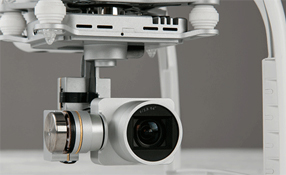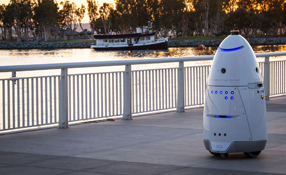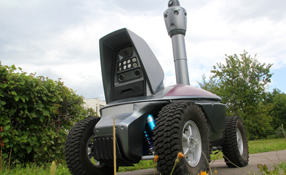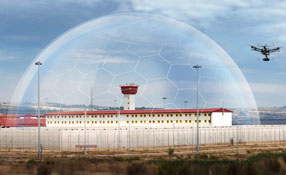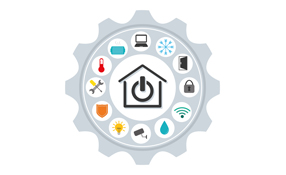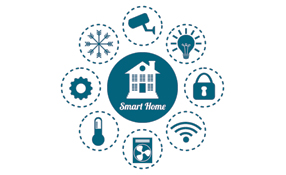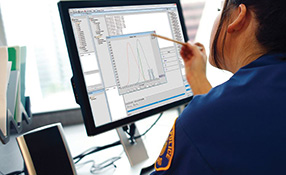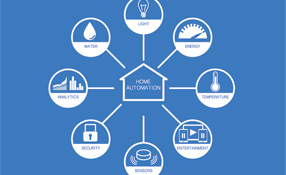Randy Southerland

Randy Southerland
Special Assignment Contributor, SecurityInformed.comRandy Southerland covers special assignments for SourceSecurity.com, interviewing a range of manufacturers, integrators and end users for in-depth coverage of trends and business opportunities. A veteran writer and former newspaper reporter and editor, he has written about the security market for 15 years. Randy was previously a regular contributor to Access Control & Security Systems magazine. He has also written on a variety of news and other business topics for publications including Atlanta Business Chronicle, Atlanta Journal Constitution, Georgia Trend Magazine, as well as trade and industrial publications. He divides his time between Atlanta and St. Petersburg, Florida.
Articles by Randy Southerland
Part 6 of our Robots in Security series Later this year Universal Protection Service will begin offering a new autonomous robot to customers in California The next security...
The age of robotics is fast approaching. To be successful, security systems integrators need to understand how these machines fit in the security of their clients, according to industry experts. &ldq...
There’s no better indication that robots are the next big thing in security than the formation of the industry organization known as Robolliance. It’s billed as “a forum for technolo...
(Image credit: Antonio Scorza / Shutterstock.com) The era of the “killer robot” hasn’t arrived, exactly, but it may not be far off. Police and the military have been using these...
Part 2 Of Our Robots In Security Series Companies realized they could improve security by mounting laser sensors and cameras on a mobile platform such as Knightscope's Autonomous...
Robots such as those designed by SMP Robotics can handle a variety of tasks ranging from perimeter fence monitoring to snow removal Robots come in all shapes and sizes from small tr...
FirstNet’s network would provide dedicated support to law enforcement on the scene not only from a local standpoint, but from a Federal standpoint as well Someday in the not-t...
Some people contend that traffic light cameras are money-makers for localgovernments rather than a deterrent for dangerous driving These days, cameras are everywhere, and gettin...
Sports security combines manned guarding with access control devices, HD surveillance cameras & analytics in a command centre for a comprehensive security presence Providing sec...
Trump’s border wall proposal reflects a rising demand forgreater border security When GOP presidential candidate Donald Trump proposed building a wall along the length of the...
Sports stadiums and leagues are constantly pushing for higher security standards & best practices to strengthen venues that may be perceived as "soft targets" Terrorism threats...
NCS4’s research has mainly been on professional sports venues, but they alsodevelop best practices for all levels of sports – including high schools and colleges Som...
Williams Meredith recently stepped out of his Kentucky home to see a drone hovering over his porch, videotaping his young daughters by the family pool. It wasn’t th...
Home security devices are evolving and expanding their offered features, providing new opportunities for the security industry Home security isn’t just home security anymore....
Small-timers with big ideas can always make their way into the industry In recent years, home automation technology has given birth to the “Smart Home” in which internet...
Voice biometrics is fast becoming a security imperative due to increasing instances of fraud and identity theft. From identifying customers at banks and call centers to securing mo...
Once home automation – controlling everything from HVAC to door locks to lights to security cameras – was solely the providence of the high-end home. Custom systems were pricey – som...
As the home automation industry has expanded with an ever growing number of devices and services, companies are placing bets on which wireless protocols will dominate. The past few years the leaders h...
Security and technology are rushing to offer home automation solutions and build out the Smart Home of connected devices and applications. As cameras, alarms, as well as, thermostats and other applian...
What does it take to be a success in the rapidly expanding home automation sector? For large and small security companies, making the jump from providing traditional security services to enabling the...
News mentions
Again in 2016, the most well-trafficked articles posted at SourceSecurity.com tended to be those that addressed timely and important issues in the security marketplace. In the world of digital publish...
On event days, representatives of emergency response & security agenciesare together and running sports venues as a unified group In the world of sports security, alliances are...
Many of the most well-trafficked articles posted at SourceSecurity.com in 2015 were those that addressed timely and important issues in the security marketplace. In the world of digital publishing, it...
